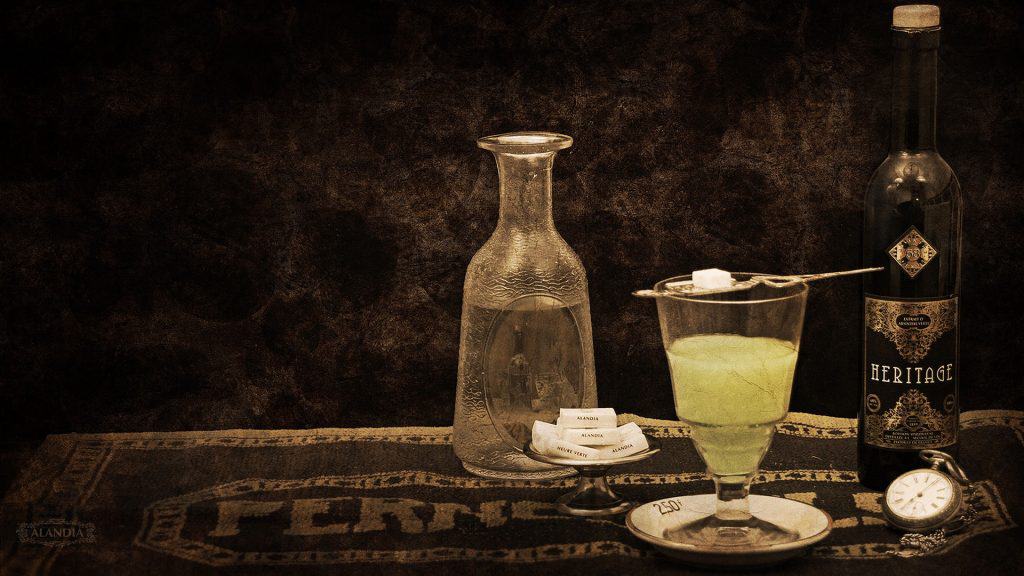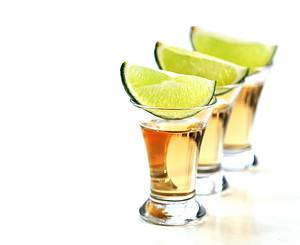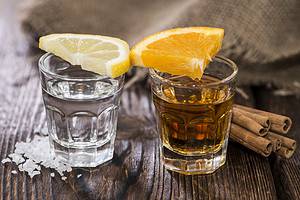Within the liquor and spirit family, there are some liquors that have notorious reputations; Absinthe is one of those liquors. This green-colored distilled liquor is known for its high alcohol content, bittersweet flavor, and powerful euphoric effects that can range from mild to low-grade psychedelic depending on the variety and potency.
Table of Contents
Absinthe: Find Out What The Fuss Is All About
But this famous liquor is not as controversial as its reputation warrants if consumed responsibly.
In this guide, we are going to tell you everything there is to know about absinthe. From its many different types of formulations and ingredients, its history, and its availability in the United States. Additionally, we will also take a deep dive into some frequently asked questions to ensure those interested in the drink have a thorough knowledge of what to expect regarding its taste, euphoric effects, and how to best drink the liquor.

What Is Absinthe?
Absinthe is a Swiss liquor that is distilled with a range of botanicals, primarily fennel, either bitter or sweet, wormwood, and green anise, which is a type of Mediterranean flower that grows small fruit buds.
With an alcohol content between 90-148 proof in the United States, absinthe is known around the world as one of the strongest spirits known. This drink is primarily green in color, but can sometimes be clear due to the gestation rate of the distillation process, and the amount of green anise fermented within the formulation.
Despite popular misrepresentation, absinthe is not a liqueur; there is no overly sweet flavor to the liquor during its formulation, and the sweet additions are part of the preparation process. Straight absinthe has a pungent, mildly bitter taste, but this is not strong enough to have it fall into the bitters classification.
Rather, this is a powerful liquor, similar in many ways to Everclear, but with much more fragrant flavors, especially with the many popular ways in which the drink is served.

The Formulation Process
Absinthe is prepared through the process of distillation. This process is also referred to as cold mixing in Switzerland–the liquor’s origin country.
The distillation process involves the processing and mixing of the botanicals into base alcohol, and there is always a second distillation process afterward to remove a majority of the bitter flavors.
After the distillation process is complete, the absinthe is typically clear and yields a high alcohol volume of around 72%. The liquor can then be bottled colorless or the signature green coloring can be added to the drink.
If distilled with wormwood, this version is known as traditional absinthe and will be green-tinted after the process is complete.
Additionally, some manufacturers will also formulate with a lower alcohol volume and this is done by adding water during the distillation process. The drink improves in flavor and potency the longer it is stored.
Alternatively, the cold mixing process can be used as well instead of distillation, and this process is a simple mixing of the botanicals with the alcohol, which are then strained from the mix shortly afterward. Cold mix has a much lower alcohol volume and does not feature the distinctive flavor of the traditional preparation.
A Brief History
Absinthe is said to date back to the 1700s, and the liquor originated in Switzerland. This drink has long been associated with artists of varying mediums, including authors such as Arthur Rimbaud, Paul Verlaine, and Ernest Hemingway, and painters such as Pablo Picasso and Vincent van Gogh. Edgar Allan Poe is believed to have consumed the liquor when writing some of his most famous stories of the macabre.
But the liquor was also popular with the general public across Europe. It was even used for a time during the nineteenth century as a medicine, particularly as a malaria preventative for troops and agricultural workers; whether or not it served its purpose in that regard is debatable. Although the extreme potency of absinthe in the bloodstream may have caused some incredibly intoxicated mosquitoes.
The liquor was exported all across the world throughout the 1800s, and eventually found its way to the United States, where the City of New Orleans popularized the drink for American consumers.
But due to the high alcohol volume content of the drink, calls for the liquor to be banned in many countries consistently rose, and certain violent behaviors and crimes were attributed to absinthe intoxication.
In the modern era of the late 20th century, absinthe would see a revival, and this was also the time in which less potent formulations of the liquor started to gain popularity. The traditional version has a long history of being banned, and some of these bans are still in place to this day.
Different Varieties
We talked about how absinthe has two traditional formulation methods, but there are actually five popular varieties, all of which feature slight tweaks and differences in the overall fermentation and distillation process.
Let’s take a look at each.
Blanche Absinthe
As previously mentioned, the final version of absinthe that is produced after the distillation process is complete is both colorless and high in alcohol volume. This style is also known as ‘Blanche absinthe,’ if the final product is watered down a bit to reduce the alcohol volume. If no water is added, that version is original, traditional absinthe.
Blanche absinthe does not undergo a secondary distillation process, and instead is diluted to reduce the alcohol, but then bottled to still maintain some of the original flavor of the first distillation process–just less intoxicating.
Since Blanche is usually less potent and colorless, this makes this version popular for cocktails and various mixed drinks.

Verte Absinthe
Verte absinthe originated in France and is green absinthe (distilled with wormwood) that is also Blanche absinthe, but the difference, apart from the color, is that verte does undergo a secondary distillation process in which select herbs are steeped in the liquor as it distills a second time.
The addition of herbs creates an even more rich green color to the liquor and the flavor is intensified to equal parts sweet and bitter due to all the botanicals and herbs. Verte is the drink that is commonly referred to as traditional absinthe, but this is only because this version was incredibly popular in Europe during the 19th century, and is commonly the quintessential version that people first think about when they hear the name.
Spanish Absinthe
Spanish absinthe or absenta is a variety that originated in 19th century Spain and is a slight variation of French absinthe (verte). The only difference between this variety and verte is that absenta replaces green anise with Alicante anise, a type of anise that is native to Spain.
The Alicante anise gives Spanish absinthe a characteristically citrus flavor, much like a cross between the flavors of an orange and a lemon.
Homemade Absinthe
Homemade absinthe, also known as clandestine absinthe, is a variety that is often bootleg due to various laws. There are no distinct differences in homemade absinthe, but this is completely up to the distiller and the exact type of product they wish to make on their own.
Bootleg absinthe can be some of the strongest liquor in the world, or it can be diluted and mixed with various other types of botanicals to experiment with different flavors. Homemade absinthe was banned for decades and still remains taboo to this day since bootleggers typically do not want to gain legal rights for distilling due to taxation and regulations.
Bohemian Style Absinthe
Bohemian style absinthe first originated in what is now the Czech Republic in the 1990s, making it the most recent variety. This variety is typically made without the use of anise or other types of botanicals and is solely distilled with wormwood.
The wormwood during the distillation process produces the characteristic green color, but the flavors are not present, and in fact, this variety is quite bitter and sometimes listed as a bitter.
It is not classified solely as a bitter because the alcohol volume in this variety is incredibly high. Due to the high alcohol volume, this is the variety that is typically used in flame absinthe (more below).
Multiple Preparation options
Due to the high alcohol volume of this liquor, absinthe is almost always served in a type of preparation to make the drink more palatable to casual drinkers. Of these preparation styles, some are traditional and date back to the origins of the liquor, and some are a bit new.
Let’s take a closer look at each preparation method.

Absinthe Ritual
Although absinthe originated in Switzerland, its most classical preparation method was popularized in 19th century France. The French Absinthe Ritual is a way to consume the liquor in terms of adding flavor and reducing some of the intoxicating effects of the liquor.
The ritual in its most traditional form features a serving glass with a wide rim, a slotted absinthe spoon, a sugar cube, and ice water.
This method begins with the glass containing between 1 to 2 ounces of absinthe. The spoon is placed over the rim of the glass with a sugar cube being placed on top of the slots in the spoon. Ice water is then poured or dripped slowly over the sugar cube until the cube is completely dissolved. You can wait for the sugar to dissolve after a few pours or you can continue pouring the ice water over the sugar until it dissolves if you want more dilution over liquor.
The mixture is then slightly stirred and ready to drink. Alternatively, an absinthe dripper can be used instead of the spoon method, and this dripper already contains the ice and sugar, by which water can then slowly be poured through the dripper.

Drip Absinthe
The drip method is also popular with drinkers who do not want more of the direct hit that absinthe can give.
This method is made in the same style as the ritual method but features the addition of club soda to add more of a mixed drink flavor and consistency.
Drip absinthe is prepared in a mixing glass that is filled with shaved or crushed ice, 1 or 2 ounces of absinthe, and a sugar cube on top of the ice.
Then an absinthe dripper is filled with club soda and slowly dripped onto the mixture to dissolve the sugar. Once the sugar has dissolved, the mixture is slowly stirred and strained into a cold serving glass.
This method has more of a carbonated flavor when compared to the traditional ritual method.

Flame Absinthe
Flaming absinthe is the most recent preparation method and this is due to the use of Bohemian-style absinthe.
This method involves placing the spoon with the sugar cube on the rim of the glass like the traditional method, but this time, instead of pouring water over the sugar, you will pour the absinthe over the sugar instead.
The Bohemian-style absinthe immediately makes the sugar cube flammable, and you then light the cube on fire with a lighter which will create a flame to dissolve the cube. Once the sugar is dissolved and the flame extinguished, the louche (milky color of the mix) is then stirred for serving.
This method gives the drink a smoky, sweet flavor, but since water dilution is not commonly used, this method is also one of the most potent methods for consuming this side of drinking it straight.
Some users also prefer to allow the flaming cube to fall into the absinthe that then ignites the mixture in the glass, but this can be dangerous, if for any other reason, the serving glass can shatter.
cocktails
Finally, it is also sometimes used in cocktails as a liquor base. This is particularly popular with cold mix absinthe and variations of the liquor with a lower alcohol volume.
One of the most popular absinthe cocktails, the Sazerac, originated in New Orleans in the nineteenth century, and features absinthe, cognac, bitters, and sugar. The drink has a bold, bittersweet taste and is one of the most popular strong cocktails in the city.
This product can also be used as a base liquor for virtually any type of mixed drink, and is perfect for consumers that want a strong, yet flavorful cocktail.

How Does It Make You Feel?
With absinthe, there are two primary components of the liquor that lead to intense euphoria and a high sensation: the high alcohol volume and the ingredient thujone.
The high alcohol volume can cause prolonged euphoria, but the comedown or crash afterward is incredibly unpleasant to many casual drinkers that have consumed too much of the liquor. Additionally, the high alcohol volume can also lead to alcohol poisoning if drinkers are not aware of the volume and continue to consume the liquor to excess.
All About Thujone
The other potent ingredient in absinthe is thujone, which is a ketone molecule found in the herb wormwood. This compound is responsible for the intense euphoria and hallucinatory effects that come from increased absinthe consumption.
Thujone’s effects are minimal and sometimes not even noticeable in 1 or 2 ounce servings, but the more a consumer drinks, the more pronounced this compound’s effects will become. This is the primary ingredient in absinthe that is responsible for the liquor’s various bans throughout the centuries.
Is Absinthe Legal in the U.S.?
Until the year 2007, which is recent history, it was illegal in the United States. With lifting of the ban, there came a clause in the law that states any and all absinthe purchased in the US had to be thujone-free to a maximum limit of 10 ppm (parts per million) of the compound within the wormwood distillation process.
This means that the psychedelic and hallucinatory aspects of absinthe for sale in the US are minimal to non-existent.
With this in mind, the alcohol volume is still quite high and this product frequently is treated much in the same way as another controversial liquor, Everclear.
Can You Drink Absinthe Straight?
You can drink it straight, but it is probably not a good idea. The alcohol volume in this liquor is very high, and one simple shot may lead to fast-acting inebriation.
Additionally, absinthe consumed straight is also likely an acquired taste. The taste can be quite bitter depending on the variety being consumed. If not bitter, the taste will certainly be powerful and will likely make you wince or even spit the liquor out since it’s so unexpected.
Drinking shots can also be dangerous, and alcohol poisoning is a real possibility, particularly if you are drinking straight Bohemian-style absinthe or absinthe that was only distilled once. Always mix this liquor.






